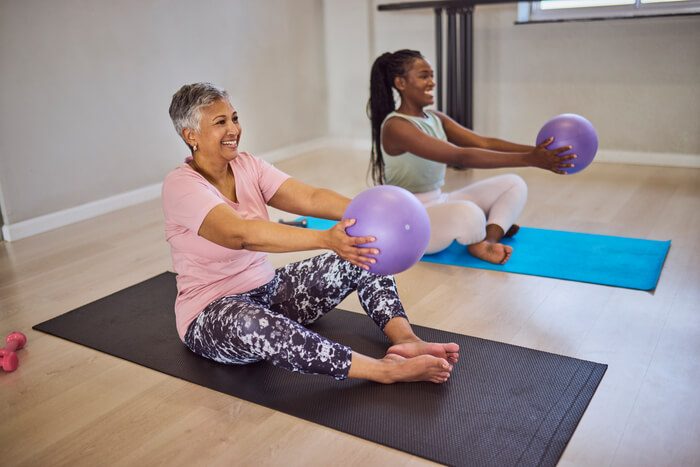Understanding the Advantages of Low-Impact Exercise
 Almost everyone knows that regular exercise can benefit people of all ages. However, not everyone knows how broad the benefits really are. According to the Centers for Disease Control and Prevention, regular physical activity has been found to reduce the risk of cardiovascular disease, stroke, diabetes and some cancers. It is also associated with improved mental health, delay in the onset of dementia and an overall improvement in quality of life. Even with all those benefits, starting a routine that includes physical activity can be difficult and often intimidating. Luckily, there are alternatives that can make exercise easier.
Almost everyone knows that regular exercise can benefit people of all ages. However, not everyone knows how broad the benefits really are. According to the Centers for Disease Control and Prevention, regular physical activity has been found to reduce the risk of cardiovascular disease, stroke, diabetes and some cancers. It is also associated with improved mental health, delay in the onset of dementia and an overall improvement in quality of life. Even with all those benefits, starting a routine that includes physical activity can be difficult and often intimidating. Luckily, there are alternatives that can make exercise easier.
How can I be more active?
Low-impact exercises can be a more approachable and sometimes even safer alternative to more commonly known high-impact exercises like running or jumping rope.
What is low-impact exercise?
It involves gentle exercises and physical activities that do not put much strain or weight on the joints while still building strength, flexibility, elevating your heart rate and improving heart health. Low-impact activities typically involve gentler and slower movements.
What are some examples of low-impact exercises?
- Brisk walking
- Swimming
- Water aerobics
- Dancing
- Lifting light weights
- Yoga
Who can benefit from low-impact exercises?
Older adults. Because older adults face a higher risk of many health conditions, exercise can be especially important and beneficial to help prevent and manage certain health conditions. Although many older adults may want to be physically active, aging can be difficult on the body and make some activities more challenging. Low-impact exercises allow older adults to be active without overstraining their body.
People with joint pain, orthopedic injuries or arthritis. Rigorous exercise may do more harm than good if you are dealing with mobility issues. Low-impact exercises are often recommended in orthopedic injury recovery and post-surgery rehabilitation programs because they help build muscle strength and overall flexibility without causing more injury.
Everyone! Even if you aren’t an older adult or you are not experiencing pain, low-impact exercise can be beneficial. It is also a good way to ease into a regular exercise routine after long periods of inactivity.
Always consult with a medical professional before beginning any new exercise routine.
